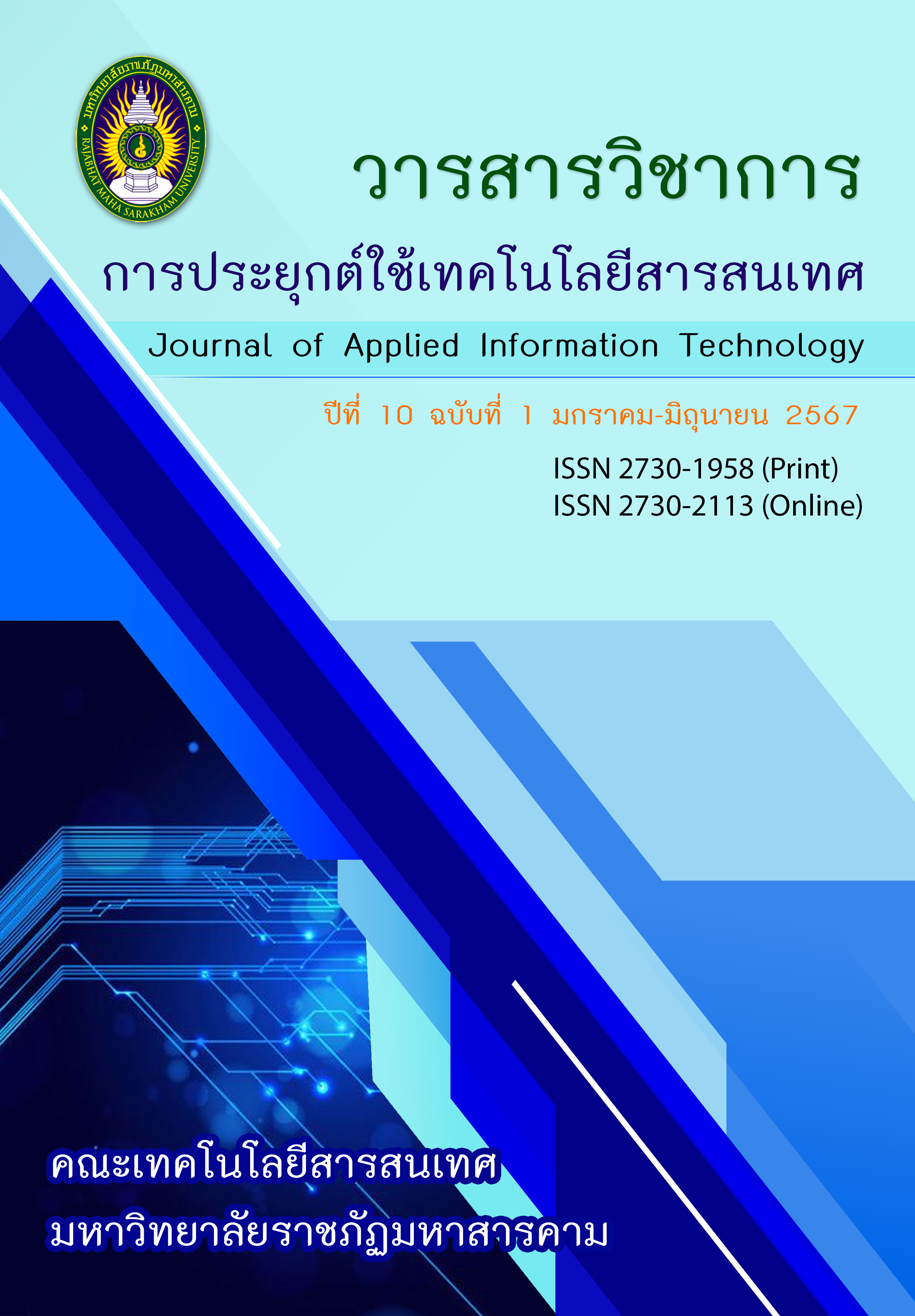การเปรียบเทียบประสิทธิภาพอัลกอริทึม Apriori และ FP-Growth ด้วยชุดข้อมูลร้านขายของชำ A Comparison of Apriori and FP-Growth Algorithms with Groceries dataset
Main Article Content
บทคัดย่อ
การวิจัยครั้งนี้มีวัตถุประสงค์เพื่อ 1) ศึกษาและเปรียบเทียบประสิทธิภาพของอัลกอริทึม Apriori และ FP-Growth ในการค้นหาไอเทมเซตที่เกิดขึ้นบ่อย (Frequent itemsets) ซึ่งเป็นขั้นตอนสำคัญในกระบวนการทำเหมืองข้อมูลกฎความสัมพันธ์ (Association rules mining) และ 2) เพื่อเปรียบเทียบความเร็วและการใช้หน่วยความจำในการค้นหาไอเทมเซตที่เกิดขึ้นบ่อย
ผลการวิจัยพบว่า 1) แต่ละอัลกอริทึมที่ใช้ในการค้นหาไอเทมเซตที่เกิดขึ้นบ่อยมีข้อดีและข้อเสียที่แตกต่างกัน สำหรับชุดข้อมูลและค่าสนับสนุนที่แตกต่างกัน และ 2) การเปรียบเทียบความเร็วและการใช้หน่วยความจำ ชี้ให้เห็นว่าอัลกอริทึม FP-Growth ทำงานได้เร็วกว่าอัลกอริทึม Apriori และใช้หน่วยความจำน้อยกว่า เนื่องจากอัลกอริทึม Apriori ต้องสแกนฐานข้อมูลหลายรอบ และ มีการสร้างชุดข้อมูลตัวแทน (Candidate itemsets) ทำให้ใช้เวลานาน ส่วนอัลกอริทึม FP-Growth เข้าสแกนฐานข้อมูลแค่ 2 รอบและไม่มีการสร้างชุดตัวแทน ทำให้ทำงานได้ดีกว่า
Article Details
เอกสารอ้างอิง
เอกสารอ้างอิง
Tan, P.-N., Steinbach, M., & Kumar, V. (2005). Market Basket Analysis using Association Rule Mining. Introduction to Data Mining, 327-352. Boston: Pearson Addison Wesley.
Zhao, Q., & Bhowmick, S. S. (2003). Association rule mining: A survey. Nanyang Technological University, Singapore, 135.
Agrawal, R., & Srikant, R. (1994). Fast algorithms for mining association rules. Proceedings of the 20th VLDB Conference Santiago, Chile, 487–499.
Han, J., Pei, J., & Yin, Y. (2000). Mining frequent patterns without candidate generation. ACM Sigmod Record, 29(2), 1–12.
Gulzar, K., Ayoob Memon, M., Mohsin, S. M., Aslam, S., Akber, S. M., & Nadeem, M. A. (2023). An Efficient Healthcare Data Mining Approach Using Apriori Algorithm: A Case Study of Eye Disorders in Young Adults. Information, 14(4), 203; https://doi.org/10.3390/info14040203
Aldino, A. A., Pratiwi, E. D., Sintaro, S., & Putra, A. D. (2021). Comparison of market basket analysis to determine consumer purchasing patterns using fp-growth and apriori algorithm. 2021 International Conference on Computer Science, Information Technology, and Electrical Engineering (ICOMITEE), 29–34.
Wicaksono, D., JAMBAK, M. I., & SAPUTRA, D. M. (2020). The comparison of apriori algorithm with preprocessing and FP-growth algorithm for finding frequent data pattern in association rule. Sriwijaya International Conference on Information Technology and Its Applications (SICONIAN 2019), 315–319. https://doi.org/10.2991/aisr.k.200424.047
Srinadh, V. (2022). Evaluation of Apriori, FP growth and Eclat Association rule mining algorithms. International Journal of Health Sciences, (II), 7475–7485.
Dwiputra, D., Widodo, A. M., Akbar, H., & Firmansyah, G. (2023). Evaluating the Performance of Association Rules in Apriori and FP-Growth Algorithms: Market Basket Analysis to Discover Rules of Item Combinations. Journal of World Science, 2(8), 1229–1248.
DEDHIA, H. (2022). Groceries dataset. https://www.kaggle.com/datasets/heeraldedhia/groceries-dataset/data.
Han, J., Kamber, M., & Mining, D. (2006). Concepts and techniques. Morgan Kaufmann, 340, 94104-3205.
Patil, M., & Patil, T. (2022). Apriori Algorithm against Fp Growth Algorithm: A Comparative Study of Data Mining Algorithms. Available at SSRN 4113695.
Nasreen, S., Azam, M. A., Shehzad, K., Naeem, U., & Ghazanfar, M. A. (2014). Frequent Pattern Mining Algorithms for Finding Associated Frequent Patterns for Data Streams: A Survey. Procedia Computer Science, 37, 109–116. https://doi.org/10.1016/j.procs.2014.08.019.


